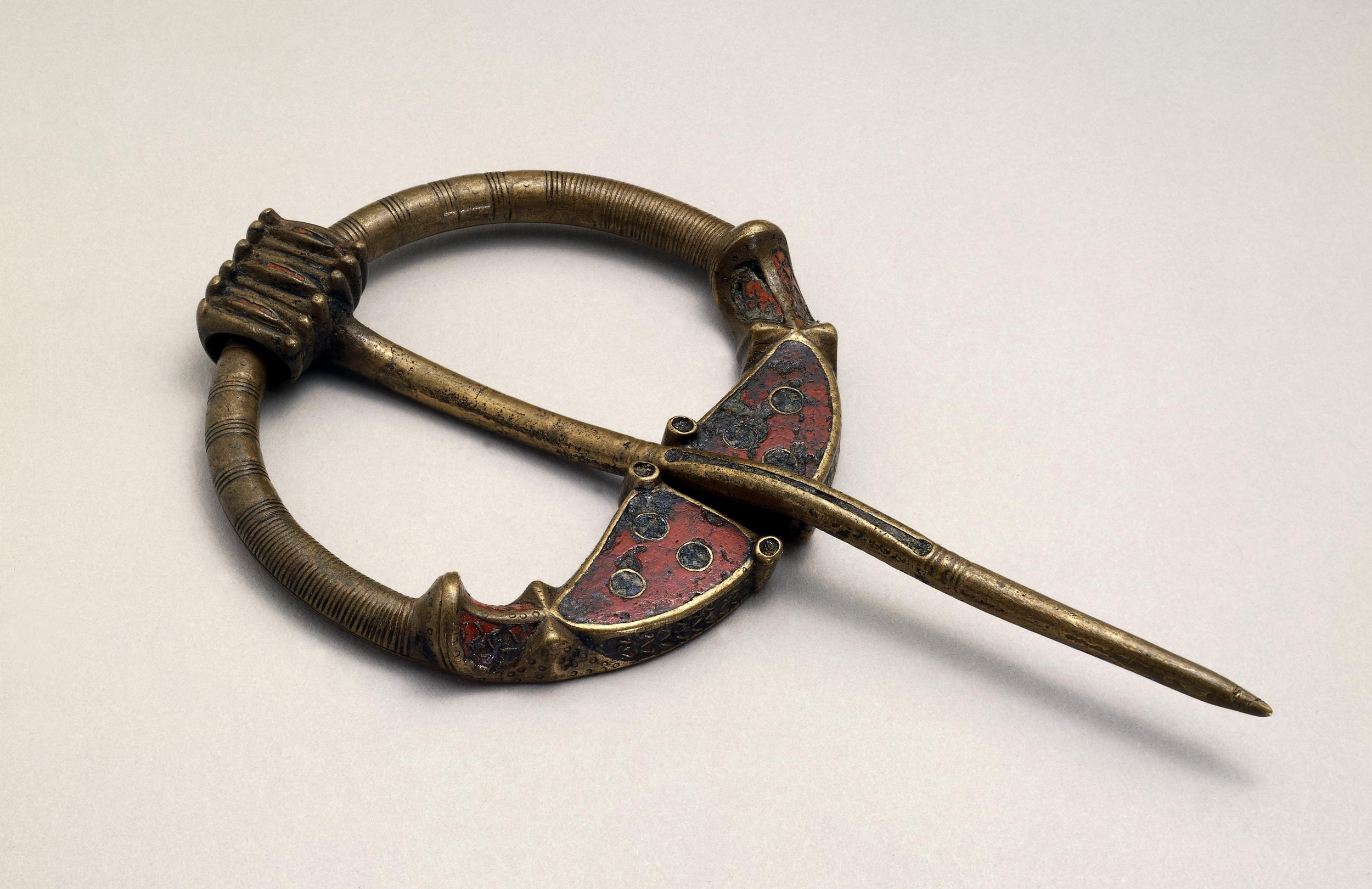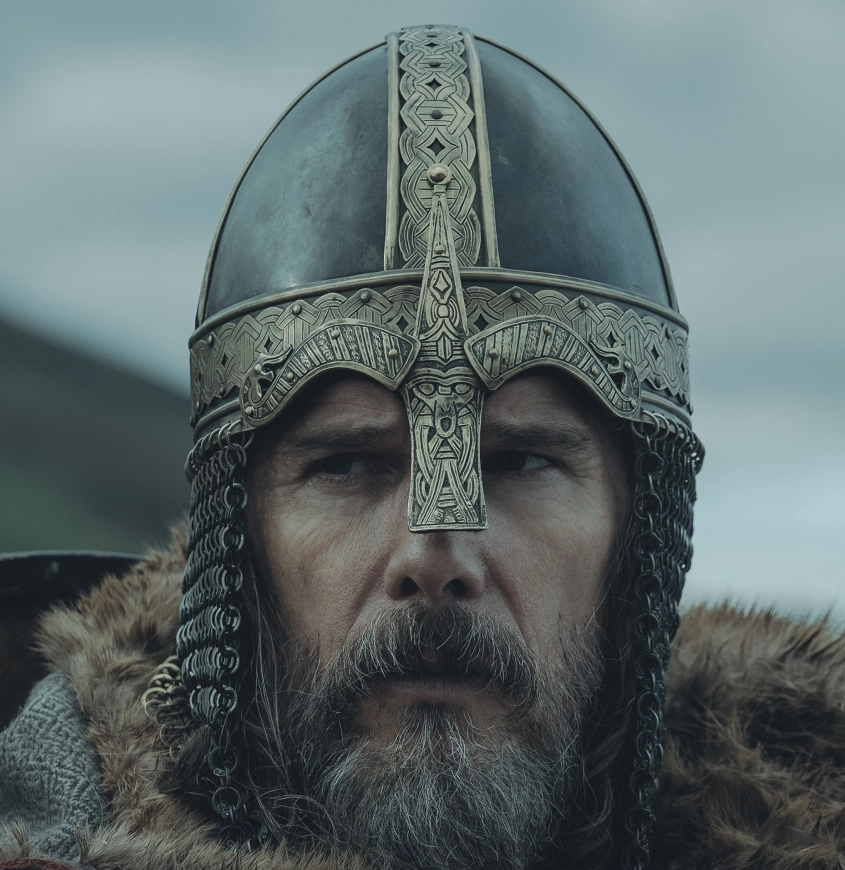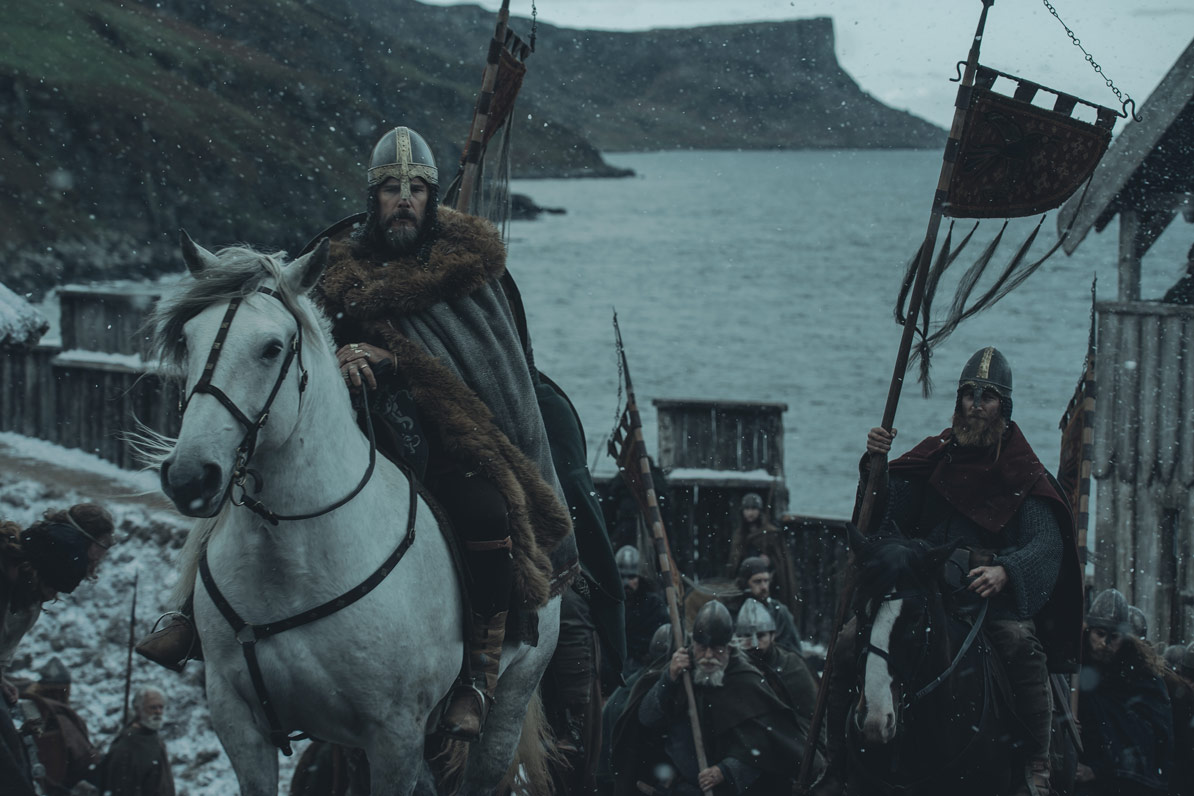
King Aurvandil War-Raven
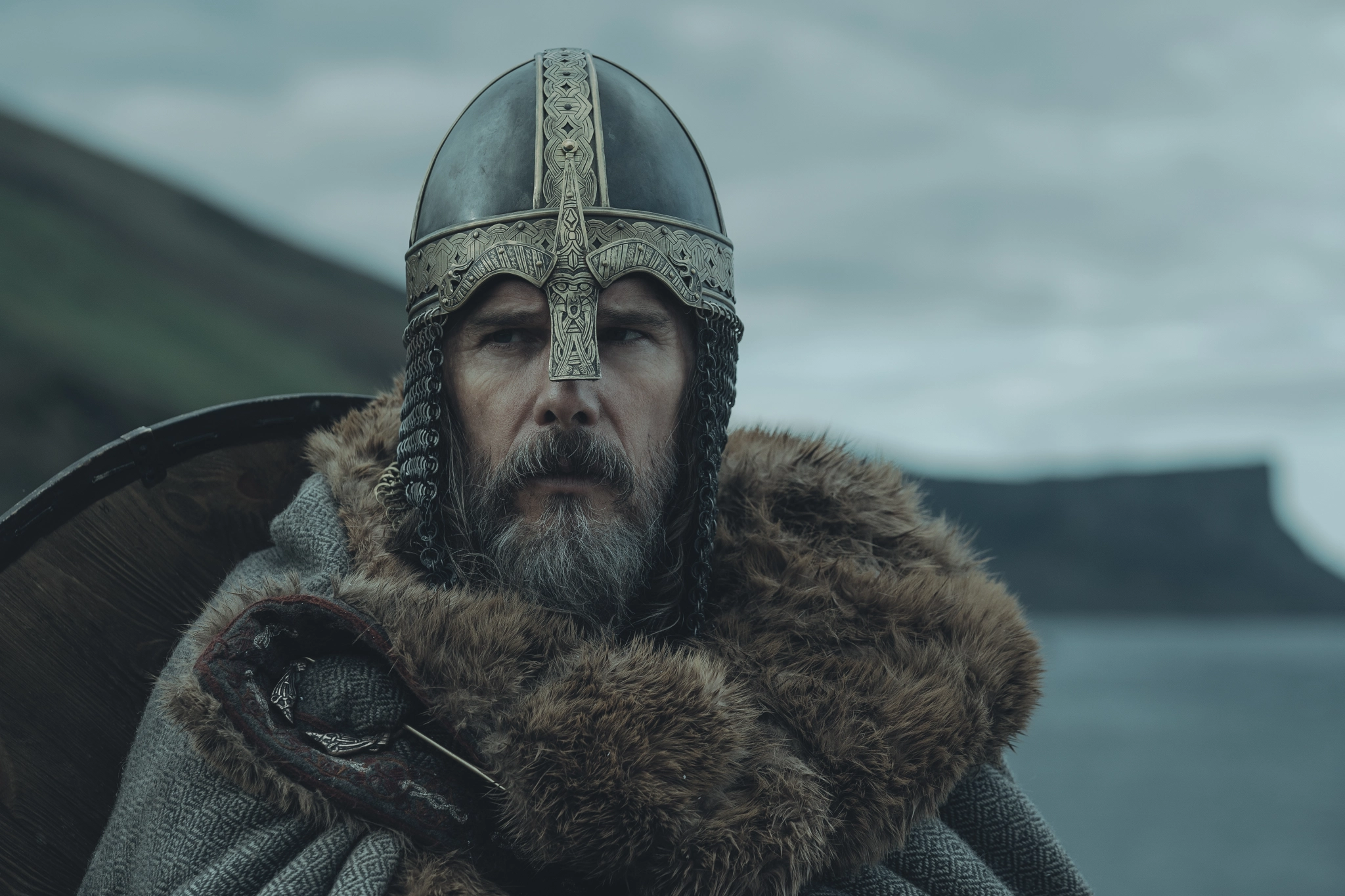
We first see King Aurvandil coming home to his kingdom from a long time away on a raid, and immediately we can understand his status. His costume is regal, with his detailed helm and luxurious fur-lined cloak.
A key accessory King Aurvandil wears is a ringed pin (also called a penannular brooch) on his shoulder. Historian Thor Ewing describes these brooches as “probably the most important form of accessory worn by Viking men” (Ewing 2006, 124). They originated in Ireland and were adopted into Scandinavian fashion in the ninth century. They were only worn on the right shoulder, never the left.
The penannular brooch serves to fasten the feldr, or cloak. If you look closely, the outside of Aurvandil’s feldr is incredibly intricate. As discussed with Prince Amleth’s costume, the most intricately woven fabrics found in archaeological digs in Iceland are from the Viking Age. Viking-Age women paid an incredible amount of attention to detail with their weaving. Archaeologist Michéle Hayeur Smith actually brings forth a theory that textile work and spinning (especially at this high level of detail) was left to women because it was considered a form of magic (Hayeur Smith 2020, 32-34).
There is only one fully preserved Viking helmet found as of today, though fragments of Viking helmets from across Scandinavia usually include the notable “brow ridges” we see on Aurvandil, and his helmet’s general overall shape reflects what’s been found archaeologically (The National Museum of Denmark). One theory states the lack of preserved Viking helmets is because there was no tradition of burying the dead with their helmets. Another theory suggests that few Viking warriors even had helmets to begin with (The National Museum of Denmark). This lack of source material means that those working on The Northman had quite a bit of creative agency, which is seen on through details of King Aurvandil’s helm.
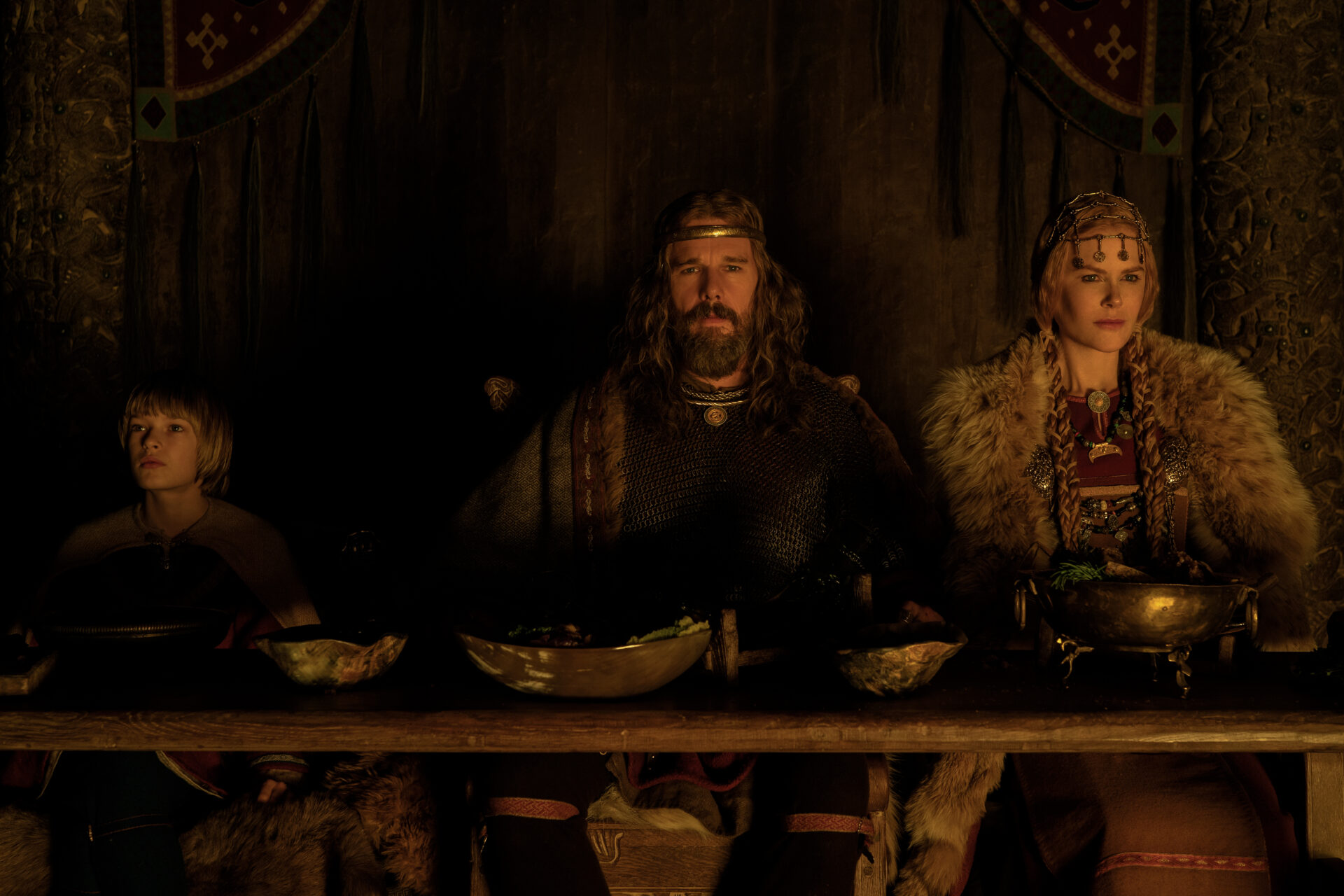
When we next see King Aurvandil, he loses the helmet and opts for a metal headband. This is actually not historically accurate. Director Robert Eggers anticipated that viewers would want to see a king wearing a crown, so he and costume designer Linda Muir settled on a halo-like metal band stamped with designs to signal Aurvandil’s status to viewers (Muir 2022). King Aurvandil is also seen wearing chain mail both when he arrives and when he dines, which is appropriate for the time period. Actually, the only fully preserved Viking helmet discussed earlier was found with the only full set of chain mail armor from the Viking Age. The two artifacts were found in Gjermundbu, Norway (The National Museum of Denmark).
References
Ewing, Thor. 2006. Viking Clothing. Stroud: Tempus.
Hayeur Smith, Michèle. 2020. The Valkyries’ Loom: The Archaeology of Cloth Production and Female Power in the North Atlantic. Gainesville: University Press of Florida. https://search-ebscohost-com.uml.idm.oclc.org/login.aspx?direct=true&db=e000xna&AN=2898491&site=ehost-live.
“Helmets” The Viking Age. The National Museum of Denmark. https://en.natmus.dk/historical-knowledge/denmark/prehistoric-period-until-1050-ad/the-viking-age/weapons/helmets/.
Muir, Linda. 2022. “‘The Northman’: A Guide to Viking Chic and Other Medieval Attire” Interview by Bill Desowitz. IndieWire. https://www.indiewire.com/2022/04/the-northman-costume-design-robert-eggers-1234720210/.
“penannular brooch” 7th Century. The British Museum. Museum number 1856,0320.1 https://www.britishmuseum.org/collection/object/H_1856-0320-1.
